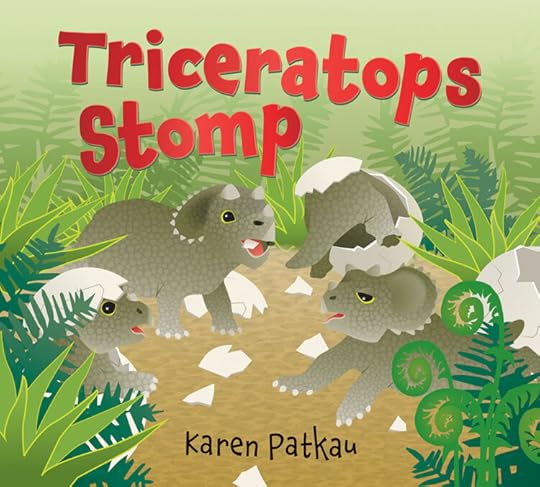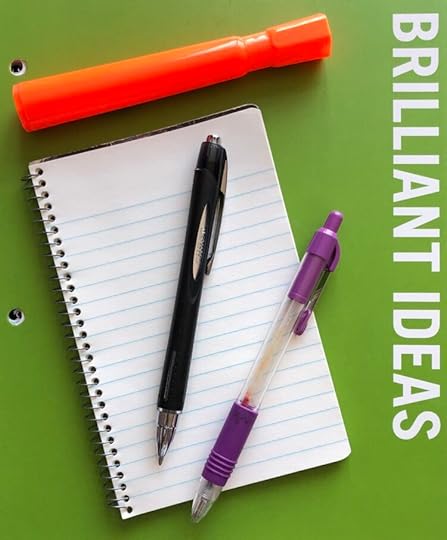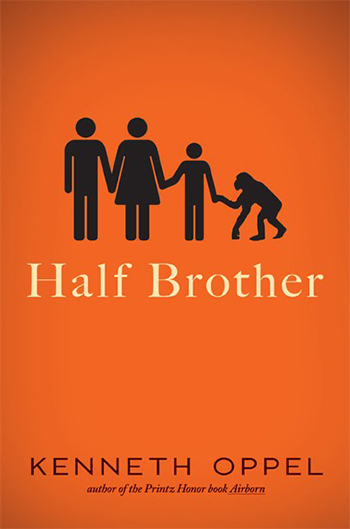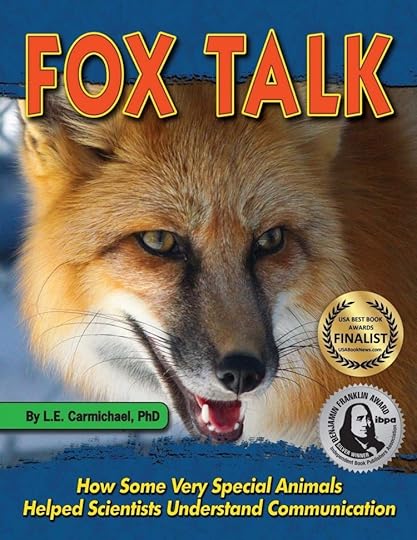L.E. Carmichael's Blog, page 25
August 5, 2019
Cantastic Authorpalooza: Karen Patkau
Welcome to Cantastic Authorpalooza, featuring posts by great Canadian children’s writers! Today’s guest: Karen Patkau . Take it away, Karen!
Peck! Pick! Pop! Crack! HATCH!
 A plaster cast of an embryo fossil and three eggs circulated around the room. Dr. David Evans, a paleontologist at the Royal Ontario Museum, described his remarkable find: a dinosaur nursery where he found dinosaur eggs!
A plaster cast of an embryo fossil and three eggs circulated around the room. Dr. David Evans, a paleontologist at the Royal Ontario Museum, described his remarkable find: a dinosaur nursery where he found dinosaur eggs!
As a writer and illustrator of non-fiction picture books, nature and animals are my passion. I’m always on the lookout for ideas about them. That evening I wrote down a few notes about Dr. Evan’s important find. Busy working on another book project, I intended to file it away with my list of potential subjects.
The cast came to me and I studied the remains of these prehistoric creatures. A tingling sensation crept up the back of my neck. I recognized it. I knew I was getting an idea.
Sometimes it takes years for a story line takes shape. My tale about dinosaur eggs came together within a couple of days. I wrote it down quickly. I rewrote it a couple of times over the next week and showed it to a few friends.
One said to me, “Does the world really need another dinosaur book?” Normally I’d have agreed, but I had a strong feeling that my idea was different enough. I sent it off a publisher that I had worked with before. I got a very speedy and positive response. Apparently the world does need another dinosaur book.
The key to writing about a popular topic is a novel perspective. In this case, it was that of some very noisy Triceratops babies.
Although my text was hypothetical, there was enough natural history in it that I needed to do research about the flora and fauna that existed during the time of Triceratops dinosaurs. I scanned the Internet, watched nature programs and looked at other dinosaur picture books. I sketched Triceratops and T-Rex skeletons at the Royal Ontario Museum. I contacted the Curator of Dinosaur Palaeoecology at the Royal Tyrrell Museum in Drumheller, Alberta with several specific questions.
The next time I saw David Evans, I told him about my story. He broke into a huge grin and said that I’d made his day. He was delighted his discovery had inspired a kid’s picture book.
Here is a recent review by Jeffrey Canton in the Globe and Mail:
“The world is full of wonder for some newly hatched Triceratops babies in Karen Patkau’s Triceratops Stomp (Pajama Press, $19.95, 2-5) as they explore with their mama, who makes sure to keep them from harm but also wants them to experience life outside of their nest. Young readers will find themselves stomping and romping and thudding about just like the baby dinosaurs in Patkau’s lively onomatopoeic text.”
Karen Patkau is an author, illustrator, designer and visual artist. She was born in Winnipeg, Manitoba. On the back of a photo of her at 10 months old, a telling note is written by her mother – “Here is Karen looking at a book. She enjoys books, especially those with pictures of animals in them.” Today, Karen lives in Toronto. Find her online at https://karenpatkau.com
July 29, 2019
Mad Science Mondays: Egon Spengler Edition
Welcome to Mad Science Mondays, where we talk about depictions of science in movies, TV shows, books, and the media. We dissect the good, the bad, the comical and the outright irresponsible. Who says learning about science can’t be fun?
Ghostbusters (1984) is one of the first movies I remember seeing in the theatre as a kid. I’m pretty sure it was the VERY first movie my little brother saw in the theatre: he was young enough that he still carried his blankie with him everywhere. During the very first scene, when the ghost screams at the poor librarian, he disappeared under that blanket and stayed there for the rest of the film. We found him sound asleep when it was time to go home.*
For a lot of us Gen X’ers, the guys from Ghostbusters weren’t just our first movie scientists, they were our first scientists… and these characters helped form a lasting impression of the profession. The impression was a lot more accurate than you might think! Let’s review:
They have to scramble to find funding for their research (Ray takes out a third mortgage to buy Ecto 1)
They work weird hours and go without sleep (as does anyone who works with live subjects)
They are frequently covered in dirt and slime (ask me about the time the freezer full of animal tissue samples died on a Friday and I got to empty and clean it…. Monday)
People in positions of power refuse to believe their results (cough – climate change – cough cough)
They save the world and become celebrities
Granted, I wish that last one happened a little more regularly, but I also believe that science is one of the only things that will save us (cough – climate change – cough cough).

Most people like Bill Murray’s flashy Venkman the best, but I have a soft spot for Egon Spengler, probably because we are both quiet, socially awkward people who like data and geek out over research. I also suspect that this movie is one of the reasons I find ghost tours so much fun.
What about you? What are your memories of this movie? Which Ghostbuster do you identify with?
* He got over his fear, eventually, becoming completely obsessed with the animated series (and a huge fan of Slimer).
July 23, 2019
Teach Write: Identifying Your Audience
 Welcome to Teach Write! This column draws on my 20 years’ experience teaching writing to kids, university students, and adult learners. It includes ideas and exercises that teachers can use in the classroom, and creative writers can use to level up their process.
Welcome to Teach Write! This column draws on my 20 years’ experience teaching writing to kids, university students, and adult learners. It includes ideas and exercises that teachers can use in the classroom, and creative writers can use to level up their process.
Last time we talked about why it’s important for writers to think about audience – the readers we are writing for. Today, let’s dig a little deeper into types of readers, and identify some questions we can use to pinpoint our approach to our target audience.
If you ask a student writer who she’s writing for, she’ll probably give you a funny look and say, “Um, my teacher?” Which is true, and there are special things to consider when we’re writing for someone who’s going to give us a grade. But the truth is that most writing assigned in classes has two audiences – the teacher, and someone else.
Depending on the assignment, that someone else could be classmates, professional peers, scholarship or grant committees, or the general public – a catch-all category that could include anyone from reluctant readers to devotees of the subject matter.
Professional writers face a similar duality, because we have to consider both our ultimate audience, the reader, and the gatekeepers – agents and editors – who decide which pieces of writing will be published and made available to those readers.
Under the umbrella of “readers,” professional writers have to determine whether:
they are writing for adults or young readers
whether or not the adults are familiar with the nonfiction topic or fiction genre
whether the young readers are early readers, middle grade readers, young adults… and whether they’re confident or reluctant readers.
If you’re feeling overwhelmed at this point, don’t worry – you’re not alone! When considering audience, there’s an easy place to start. Ask yourself these questions:
Who am I writing for? Children, teens, teachers, adults… It’s OK to be pretty general at this stage.
Why would this person want to read my work? For information, entertainment, to assess your ability or assign a grade?
What does this person already know? Are they likely to be new to your topic, or do they have some knowledge already?
Does this person know more than I do about the topic? If you’re writing for kids, maybe not. If you’re writing for a teacher or grant committee, it’s entirely possible.
Hopefully at this point, you can see how thinking about your audience and what they need from your work will influence the way you approach your writing – no matter what genre or format you’re working in!
Next time, we’ll begin taking a closer look at different kinds of audiences and how we can adapt our writing to ensure that, no matter what we’re trying to communicate, the message gets through. In the meantime, I’d love to hear your thoughts! Drop a note in the comments.
Hey, did you know I teach writing workshops? It’s true – I work with adult writers, teachers, and students of all ages. Contact me to learn more.
July 14, 2019
STEMinism Sunday: Amanda Roe

Just hanging out in the forest, looking for some bugs.
Welcome to STEMinism Sunday! As a former woman in science, I have a deep and enduring interest in the experiences and representation of women in STEM fields (science, technology, engineering, and math). This series will be an opportunity for me – and you – to get to know some of these intellectual badasses.
Today I’d like you to meet Dr. Amanda Roe, of the Great Lakes Forestry Centre (Natural Resources Canada). I wanted to feature Roe because she’s not only a dedicated scientist, she’s also a talented visual artist, meaning her work represents STEM but also STEAM – science, technology, engineering, ARTS, and math. Kind of like me, but with more pictures. 
July 8, 2019
Cantastic Authorpalooza: Kenneth Oppel
 Welcome to Cantastic Authorpalooza, featuring posts by great Canadian children’s writers! Except for today, because I was traveling, and then I was sick, and then suddenly the post was due. So instead, please enjoy a review of one of the lesser-known-but-equally awesome books by the beloved Kenneth Oppel.
Welcome to Cantastic Authorpalooza, featuring posts by great Canadian children’s writers! Except for today, because I was traveling, and then I was sick, and then suddenly the post was due. So instead, please enjoy a review of one of the lesser-known-but-equally awesome books by the beloved Kenneth Oppel.
Synopsis (from Chapters’ website):
When Ben Tomlin’s mother brings home his “new baby brother,” an eight-day-old chimpanzee, Ben is far from thrilled. His father, a renowned behavioural scientist, has uprooted the family and moved them halfway across the country, to Victoria, B.C., so he can pursue a high-profile experiment — to determine whether chimpanzees can learn human sign language.
The chimp, named Zan, must be raised exactly like a human. He’s dressed in clothes and fed in a high chair and has a room full of toys. Ben is soon smitten. Joining the team of students who are helping with the experiment, Ben becomes both researcher and adored older brother.
Within months, Zan learns his first signs and becomes a media sensation. At his new school, Ben’s life seems similarly charmed as he vies for the attention of the beautiful Jennifer — using his newly acquired scientific observational skills.
But when Project Zan unexpectedly loses its funding, Ben’s father is under huge pressure to either make the experiment succeed or abandon it — and Zan. Unable to convince his father that Zan is now part of the family, Ben must risk everything he knows and everyone he loves in order to save his baby brother.
My Review:
Half Brother deals with a lot of the same questions that came up while I was researching Fox Talk. What are the most ethical ways to study and learn from animals? What responsibilities do scientists have towards the animals they include in their experiments? In the not-so-distant past (read = the time this book is set), conventional scientific wisdom held that animals were creatures of instinct without consciousness or feelings, and these issues weren’t issues at all. Now that we know better, how do we balance the rights and needs of the animal with the need to expand human knowledge?
While Half Brother explores these serious issues in some detail, the problem never gets in the way of the plot. First and foremost, this is a story about family, in all its forms. It’s about a teenage boy facing all the regular teenage problems, complicated by a sibling other people don’t understand. I especially loved Oppel’s deft handling of Ben’s feelings towards Zan – the change from resentment to acceptance to devotion is smooth and believable.
Required reading for budding scientists and animal lovers of all ages.
Have you discovered Kenneth Oppel’s books? Which one is your favourite? I’d love to hear what you think.
July 5, 2019
New Technology Revealed Record-Setting Fox Journey, Says Canadian Science Author
 News that an arctic fox from Svalbard, Norway, traveled 3,506 km across the sea ice to Ellesmere Island, Canada surprised social media, but not Dr. L. E. Carmichael. The Ontario author of children’s science books is also a scientist whose research revolved around the movements of these plucky little voyagers.
News that an arctic fox from Svalbard, Norway, traveled 3,506 km across the sea ice to Ellesmere Island, Canada surprised social media, but not Dr. L. E. Carmichael. The Ontario author of children’s science books is also a scientist whose research revolved around the movements of these plucky little voyagers.
Carmichael’s PhD, on the population genetics of wolves and arctic foxes, received a Governor General’s Medal at the University of Alberta in 2006. “In those days, the record for long-distance travel in arctic foxes was around 1,000 km,” Carmichael said. Does that mean that today’s foxes are traveling further? Not necessarily. Before the development of modern satellite collars, animal migrations were measured with ear tags, plastic “earrings” with identification numbers on them. “You’d catch a fox and tag it, then release it to do its thing,” she said. “Then you’d wait months or years for the fox to be recaptured somewhere else.” This method gave scientists a starting point and an end point for the animal’s journey. Since there was no way to know where the fox went along the way, researchers underestimated, assuming that it traveled in a straight line from point A to point B.
With the new satellite technology, however, Norwegian researchers were able to log the fox’s movements throughout her entire journey, revealing not just the distance she traveled, but the precise path she followed – a path that emphasizes the importance of sea ice in the migration.
The record-setting fox in this study was a young female, who may have been looking for a new territory in which to breed. “When foxes born in one area breed in another location, they transfer their DNA from place to place,” Carmichael said. This gene flow was the focus of her research, which revealed very few genetic differences between fox populations that are seasonally connected by sea ice – including those in Canada and in Svalbard. “The ironic thing is that I was encouraged to include Svalbard foxes in my research because they lived so far from Canada, and people thought they’d be genetically distinct. Of course, this new research shows exactly why that isn’t the case.”
Carmichael was also excited to note that the new study’s lead author, Dr. Eva Fuglei of the Norwegian Polar Institute, is someone she collaborated with while completing her PhD. “Dr. Fuglei is brilliant and dedicated and was very supportive of me as a young woman in science,” Carmichael said.
Carmichael is the author of more than 20 science books for children and teenagers. Her 2013 release, Fox Talk: How Some Very Special Animals Helped Scientists Understand Communication, won a Benjamin Franklin Award and a Gelett Burgess Honor. It’s also the subject of presentation called “Decoding Domestication,” which Carmichael offers at schools and libraries across the country. A second title, Fuzzy Forensics: DNA Fingerprinting Gets Wild, won the Lane Anderson Award for best Canadian children’s science book in 2014. Her newest book, The Boreal Forest: A Year in the World’s Largest Land Biome, will be available May 5, 2020, from Kids Can Press.
More information on Carmichael’s work is available at her website, www.lecarmichael.ca. In Ontario, requests for school and library appearances can also be directed to www.authorsbooking.com
July 3, 2019
Mad Science Monday: The (Missing) Link Between Smartphones and Horns

Image by Shahar D. and Sayers M., Scientific Reports, 2019/CC BY 4.0
Welcome to Mad Science Mondays, where we talk about depictions of science in movies, TV shows, books, and the media. We dissect the good, the bad, the comical and the outright irresponsible. Who says learning about science can’t be fun?
OK, yes, it’s not technically Monday anymore. I traveled, I was felled by an airplane cold. But then, as I soaked my coughing muscles in a hot bath while listening to old episodes of The Daily Show on Sirius on Demand, I heard an incredible story about how smartphone use is causing millennials to grow horns. Here’s the link to coverage at the BBC.
Hacking up my second lung, my first thought in reaction to this story was, well, sure. Because I use the internet regularly and have therefore been exposed to a lot of conversation about the evils of both millennials and smart phones, so the equation
millennials + smartphones = inevitable emergence of inner demons
seemed completely logical.
My second thought, emerging from my life-long exposure to both the sciences and oft-times sketchy science reporting, was that this story was indeed incredible, in the sense of “impossible to believe.”
My second thought was the way to go, as this plain-language article from PBS outlines in some detail.
TL/DR version: the authors of the original study didn’t actually measure cell phone use in their subjects, meaning they are blaming a skeletal anomaly on a specific behaviour based on… absolutely no data.
Another red flag? The authors recommend preventative postural education, and one of them runs an online store that sells posture-correcting pillows.
In science speak, that’s called a conflict of interest. It doesn’t necessarily mean that the results of the research are biased, but it absolutely means that readers should apply an extra filter of critical thinking before accepting them.
I encourage everyone to read the PBS article, because it’s a great primer on scientific literacy that provides tools for assessing all science reported in the media. In the meantime, you can probably stop poking your skull in search of horns.
Updated to add: I mentioned this story to my (brutal but effective) massage therapist today and his understanding is that bone spurs result from joint compression, which would affect the front of the neck and head during phone use, not the back of the skull. Granted, he had not yet read the study, but there you go.
What are your thoughts on this story? Do you have other favourite examples of incredible results to share?
June 25, 2019
Teach Write: Who Are You Writing For?
Welcome to Teach Write! This column draws on my 20 years’ experience teaching writing to kids, university students, and adult learners. It includes ideas and exercises that teachers can use in the classroom, and creative writers can use to level up their process. Last time we talked about the 40:20:40 rule of writing, and how the first 40% of the effort that goes into any piece happens in the preparation phase. The very first piece of preparation is to identify your audience: in other words, who are you writing for? Professional writers think about audience all the time (it’s how […]
The post Teach Write: Who Are You Writing For? appeared first on L. E. Carmichael.
June 16, 2019
STEMinism Sunday: STEM Books for Junior Scientists
Welcome to STEMinism Sunday! As a former woman in science, I have a deep and enduring interest in the experiences and representation of women in STEM fields (science, technology, engineering, and math). This series will be an opportunity for me – and you – to get to know some of these intellectual badasses. I’m on the road right now, posting between adventures in Cape Breton (*waves from Nova Scotia*), so it’s a quick one today – a list of lists of kids books about fabulous women in science. Head to your local bookstore or library and load up on inspiration! […]
The post STEMinism Sunday: STEM Books for Junior Scientists appeared first on L. E. Carmichael.
June 12, 2019
Cantastic Authorpalooza: Ishta Mercurio
Welcome to Cantastic Authorpalooza, featuring posts by great Canadian children’s writers! Today’s guest: Ishta Mercurio. Take it away, Ishta! A Noisy Kind of Quiet I wrote the first draft of SMALL WORLD in 2011. When I tell people that, they always pause. I can see the gears working in their minds: am I THAT BAD at this writing thing? Is publishing THAT SLOW? Does it always take THAT LONG? And how can they ask me these questions in a way that’s not insulting? (After all, this is Canada. Being “not insulting” is our brand.) Well… The answer to those questions […]
The post Cantastic Authorpalooza: Ishta Mercurio appeared first on L. E. Carmichael.



